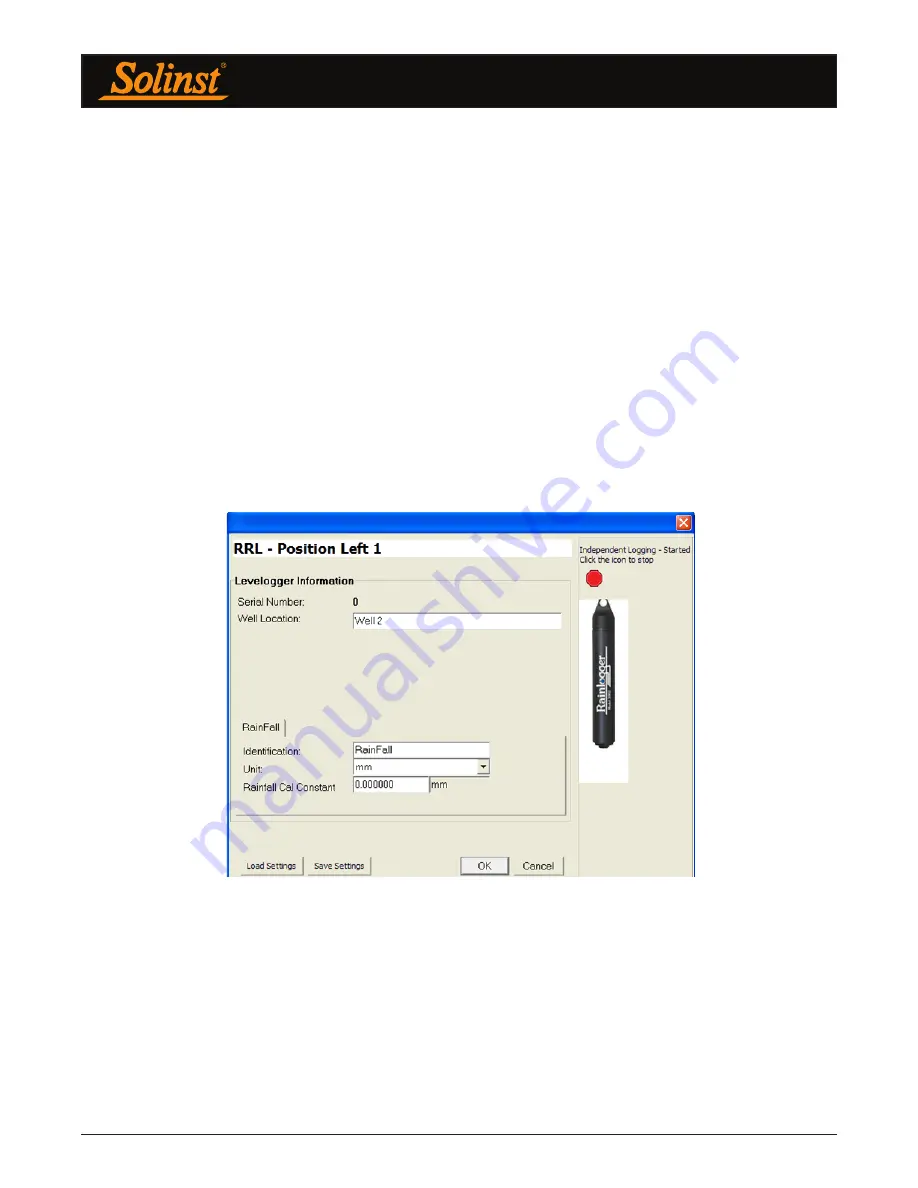
Remote Radio Link User Guide
Page 21
Rainlogger Measurement Parameters:
Note:
You
must
program your Rainloggers in order to enter a Rainfall Cal Constant (the amount of rainfall per tip of
the rain gauge), but you do not have to set them to record independently.
There is one channel of measurement for Rainloggers. The ‘RainFall’ Channel records each tip time by the
connected tipping-bucket and outputs the amount of rainfall per tip (input Rainfall Cal Constant). When an
RRL Remote Station reports Rainlogger data to the Home Station, it will send the accumulated rainfall amount
per sample period (based on RRL Station Sample Rate). To determine the exact time that a tip occurred, the
Rainlogger would have to be set to record in its own internal memory, which stores each tip event.
• Identification
describes the measurement parameter of the channel and has already been
configured as ‘RainFall’. The channel can be re-named to suit each project. The Identification
field will be the channel heading, data column heading and graph line name when viewing the data.
Identification is limited to 32 characters.
• Units
refers to the channel’s unit of measurement. There are two units of measure available for the
user to select: mm or in.
• The Rainfall Cal Constant
field allows you to enter the calibration factor for the tipping-
bucket you will be using. The calibration factor is the amount of rainfall depth (mm, in) per tip. The
calibration factor should be indicated on a label on the tipping-bucket device or in the
manufacturer’s documentation. Input the calibration factor in mm or inches.
Figure 4-12 Rainlogger Measurement Parameters
Note:
When an RRL reports Rainlogger data to the Home Station, it will send the accumulated rainfall per sample
period (based on RRL Sample Rate).
After all dataloggers have been entered and programmed as desired, proceed to Step 6.
Summary of Contents for Remote Radio Link
Page 1: ...Solinst Remote Radio Link RRL User Guide November 6 2018...
Page 51: ......















































